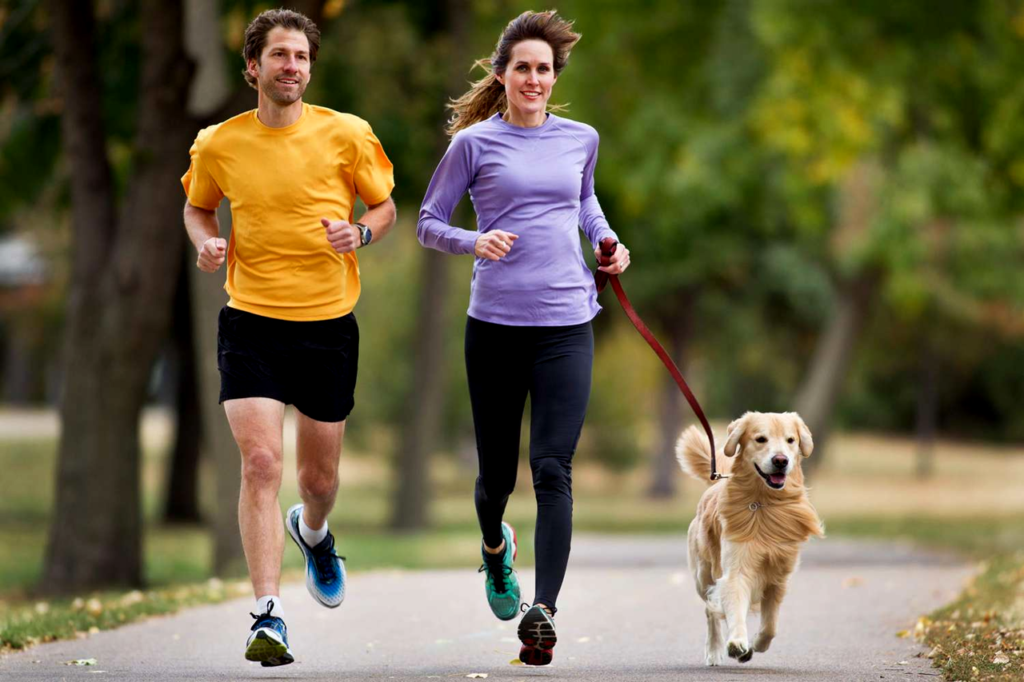
The Role of Exercise in Pets Well Being
Pets play an integral role in our lives, offering companionship, and love, and sometimes even serving as emotional support animals. As responsible pet owners, we have to ensure their well-being, and one crucial aspect of this is exercise. In this article, we’ll explore why exercise is essential for pets and how to incorporate it into their daily routine.
Read More: The Benefits of Regular Exercise for Pets
The Role of Exercise in Pets Well Being

Pets hold a special place in our lives, providing companionship, love, and often, serving as integral members of our families. Ensuring their well-being is a primary responsibility for pet owners. Among various aspects contributing to their health, exercise stands out as a crucial factor. In this article, we delve into the significance of exercise in maintaining the well-being of our beloved pets.
Understanding the Physical Needs of Pets
Similar to humans, pets have physical needs that must be met for optimal health. Exercise plays a pivotal role in fulfilling these needs by allowing pets to expend excess energy, maintain a healthy weight, and prevent various health issues such as obesity and joint problems.
Benefits of Exercise for Pets
Regular exercise offers a multitude of benefits for pets. Firstly, it enhances their physical health by strengthening muscles, improving cardiovascular function, and boosting immunity. Additionally, exercise provides essential mental stimulation, keeping pets’ minds sharp and reducing stress and anxiety.
Types of Exercises for Pets
There is a diverse array of exercises tailored to engage pets, both indoors and outdoors. Indoor activities such as interactive toys, agility courses, and puzzle games can keep pets mentally stimulated and physically active even within the confines of the home. On the other hand, outdoor activities like walking, hiking, and swimming offer pets the opportunity to explore their surroundings while getting their necessary dose of exercise.
Creating a Routine
Consistency is key when it comes to incorporating exercise into a pet’s routine. Establishing a regular exercise regimen ensures that pets receive adequate physical activity to maintain their health. It’s essential to tailor the exercise routine according to the pet’s breed, age, and individual needs to ensure effectiveness and sustainability.
Incorporating Exercise into Daily Life

Incorporating exercise into daily life doesn’t have to be complicated. Simple activities such as daily walks, interactive play sessions, and enrichment activities can keep pets engaged and active. These activities also serve to strengthen the bond between pet and owner, fostering a deeper connection and understanding.
Signs of a Healthy Exercise Routine
A well-exercised pet exhibits various signs of good health. These may include a healthy weight, strong muscles, high energy levels, and a keen enthusiasm for physical activities. Additionally, mentally stimulated pets display alertness and curiosity, indicative of a well-rounded exercise routine.
Common Mistakes to Avoid
While exercise is beneficial, it’s crucial to avoid common mistakes that can hinder a pet’s well-being. Overexertion is a common pitfall, leading to fatigue, injuries, and burnout. Additionally, neglecting mental stimulation can result in boredom and behavioral issues. Striking a balance between physical and mental exercise is essential for overall well-being.
Consulting with Veterinarians
Before embarking on any exercise regimen, it’s advisable to consult with a veterinarian, particularly for pets with underlying health conditions or older pets. Veterinarians can provide valuable guidance on suitable exercises, intensity levels, and any precautions necessary to ensure that pets exercise safely and effectively.
The Role of Nutrition
Exercise should be complemented with a balanced diet to support overall health and well-being. Providing pets with high-quality food tailored to their nutritional needs ensures they have the energy and nutrients necessary for optimal performance and muscle recovery.
Benefits of Exercise for Different Pets

Different pets have unique exercise requirements based on factors such as breed, size, and age. For example, dogs may thrive on activities like fetch, agility training, and long walks, while cats may prefer interactive toys and climbing structures. Small mammals like rabbits and guinea pigs benefit from ample space to roam and explore, along with enrichment activities to keep them mentally stimulated.
Read More: Benefits of Exercise for Senior Pets
FAQs
- What if my pet doesn’t enjoy exercise? Just like humans, pets have individual preferences. Experiment with different activities to find what your pet enjoys most, and make exercise a positive experience.
- How much exercise does my pet need? The amount of exercise required varies depending on factors such as breed, age, and health condition. As a general guideline, dogs typically need at least 30 minutes to 2 hours of exercise per day.
- Can I over-exercise my pet? Yes, over-exercising can lead to injuries and exhaustion. It’s essential to tailor the exercise regimen to your pet’s individual needs and gradually increase intensity.
- Are there specific exercises for older pets? Older pets may have limitations, but they still benefit from gentle exercises like short walks and light play sessions. Consult with your veterinarian for appropriate activities.
- Should I exercise my pets if they are sick or injured? Always follow your veterinarian’s advice. In some cases, gentle exercise may aid recovery, while in others, rest may be necessary. Prioritize your pet’s health and well-being above all else.
The Final Words
Exercise in pets plays a vital role in maintaining the well-being of pets, contributing to their physical health, mental stimulation, and overall happiness. By incorporating regular exercise into their routine, pet owners can ensure that their furry companions lead fulfilling and healthy lives.







